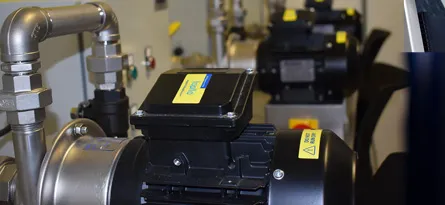Having trouble with your Centrifugal Pump? Our comprehensive guide will help you get up and running in no time.
The Tapflo CT Centrifugal Pump range includes the CTH (Hygienic) and CTI (Industrial) Centrifugal Pumps. This troubleshooting guide includes suggestions from Tapflo UK’s pump experts to maintain your centrifugal pumps and keep them in optimal condition.
To ensure your Tapflo Centrifugal Pump is running efficiently and to avoid breakdowns, we recommend regularly checking the following:
- The suction and discharge pressure of your pump
- Inspect the motor in line with the motor manufacturer’s instructions
- The mechanical seal within your pump does not require maintenance, but if leakage occurs, this should be replaced.
Maintenance
The table below shows a range of problems you may be facing with your CTI or CTH Centrifugal Pumps, as well as possible actions to solve them. If the below solutions don’t work, please contact our team today for help.
For further maintenance check out the CT Centrifugal Pump Manual.
| Motor Overheating | Insufficient Flow or Pressure | No Pressure on the Discharge | Irregular Flow / Pressure | Noisy Operation & Vibrations | The Pump gets clogged | Pump Overheating | Abnormal Wear | Leaking Mechanical Seal | Possible Reason | Solution |
| X | X | Motor running in the wrong direction | Invert the direction of rotation | |||||||
| X | X | X | X | Insufficient Suction Head (NPSHa) | Increase NPSHa by: – Raise the Fluid Level at the fluid source – Lower the pump – Increase the Pressure in the Suction Tank – Reduce Vapour Pressure – Increase the ø of the Suction Pipework – Make the Suction Pipework shorter and more direct |
|||||
| X | Pump/pipe is clogged | Clean Pump and Pipework & introduce Strainer / Filter | ||||||||
| X | X | X | X | Cavitation | Increase NPSHa Bring the pump “on curve” by use of a regulation valve on the discharge of the pump Reduce the temperature of the liquid Clean any filters or strainers Ensure there are no air pockets in the pipework |
|||||
| X | X | X | X | The pump is sucking air | Make sure all the connections leading to the pump are tight. | |||||
| X | X | X | Discharge Pressure too high | Reduce the head by increasing the pipe ø and / or reduce the number of valves and bends | ||||||
| X | X | X | X | X | Liquid Temperature is too high | Cool the liquid or introduce a Thermosiphon | ||||
| X | Broken or worn Mechanical Seal | Replace the mechanical seal, the pump has been dry running, been damaged by abrasion, deadheaded, damaged by thermal shock | ||||||||
| X | Wrong O-Ring Material | Change the O-Ring Material to one that is suitable with the fluid | ||||||||
| X | X | X | X | The Impeller scratches on the pump housing | Reduce the temperature of the fluid and / or suction pressure. Adjust the clearance between the impeller and the housing. |
|||||
| X | X | Too much load on the pipe | Connect the pipework independently of the pump using expansion joints / bellows | |||||||
| X | X | X | X | Foreign Objects in the liquid | Install a suitably sized strainer / filter in the suction side of the pump. | |||||
| X | Spring Tension too low on the Mechanical Seal | Adjust the tension, as detailed in the IOM. | ||||||||
| X | Discharge Pressure too Low | Increase the pressure generated by the pump by installing a larger impeller Review the discharge pipework to assess whether it can be made any more direct or shorter. |
||||||||
| X | X | Pump is not filled with liquid | Fill the pump with liquid | |||||||
| X | X | X | Liquid Parameters are different to those calculated with when selecting the pump | Check the liquid parameters against those supplied. Verify selection. Review pump suitability and change if necessary. |







